- Reasons to Grow Early Tomatoes
- Choosing the Right Tomato Variety for Early Sowing
- 1. Early Maturing Varieties
- 2. Determinate vs Indeterminate Varieties
- 3. Disease Resistance
- 4. Size and Culinary Use
- 5. Local Recommendations
- Starting Seeds Indoors: Tips and Tricks
- 1. Choose the Right Containers
- 2. Use Good-Quality Soil
- 3. Provide Adequate Light
- 4. Maintain Proper Temperature
- 5. Water Wisely
- 6. Provide Air Circulation
- 7. Harden Off the Seedlings
- 8. Keep a Record
- Preparing the Soil for Tomato Seedlings
- Transplanting Tomato Seedlings Outdoors
- Timing:
- Prepare the soil:
- Hardening off:
- Transplanting technique:
- Spacing:
- Watering:
- Protecting from pests:
- Protecting Early Tomato Plants from Cold Weather
- The Importance of Protecting Early Tomato Plants
- Choose the Right Tomato Varieties
- Start Seeds Indoors
- Harden Off Seedlings
- Use Protective Covers
- Mulch the Soil
- Monitor the Weather
- Summary
- Watering and Fertilizing Early Tomato Plants
- Watering
- Fertilizing
- Disease and Pest Prevention for Early Tomatoes
- Disease Prevention
- Pest Prevention
- “Question-Answer”
- When should I start sowing tomato seeds for an early harvest?
- What is the best method for sowing tomato seeds?
- Do tomato seedlings need any special care before transplanting them outside?
- How often should I water tomato seedlings?
- Can I use any type of soil for sowing tomato seeds?
- “Video” Best Way to Start Tomato Seeds Indoors (or Outdoors)
Growing tomatoes is a popular hobby for gardeners, but many enthusiasts want to extend their growing season and enjoy the taste of homegrown tomatoes earlier in the year. One way to achieve this is by sowing early tomatoes on seedlings. By starting tomato seeds indoors, you can give them a head start and transplant them outside once the weather warms up. In this article, we will provide some tips for sowing early tomatoes on seedlings to help you achieve an early harvest.
1. Choose the right tomato varieties: Not all tomato varieties are suitable for early sowing. Look for varieties that are known for their early maturity and cold tolerance. Some popular early tomato varieties include ‘Early Girl’, ‘Siberian’, and ‘Glacier’.
2. Start seeds indoors: To get a jumpstart on the growing season, start your tomato seeds indoors about 6-8 weeks before the last frost date in your area. Use seed trays or peat pots filled with seed starting mix. Place the trays in a warm and sunny location or use grow lights to provide adequate light for seed germination.
3. Provide proper care: As your tomato seedlings grow, make sure to provide them with proper care. Keep the soil evenly moist but not waterlogged. Transplant the seedlings into individual pots once they have two sets of true leaves. Fertilize the seedlings regularly with a balanced liquid fertilizer to promote healthy growth.
“By starting tomato seeds indoors, you can give them a head start and transplant them outside once the weather warms up.”
4. Harden off the seedlings: Before transplanting your tomato seedlings outdoors, you need to harden them off. This process involves gradually acclimating the seedlings to outdoor conditions by exposing them to outdoor temperatures and sunlight for a few hours each day. Start with short periods of time and gradually increase the duration over the course of a week.
5. Choose the right planting location: When choosing a spot for your early tomato plants, look for a location that receives full sun and has well-draining soil. Consider using raised beds or containers to provide better control over soil temperature and moisture levels. Proper air circulation around the plants can also help minimize the risk of fungal diseases.
By following these tips for sowing early tomatoes on seedlings, you can give yourself a head start on the growing season and enjoy ripe, homegrown tomatoes earlier in the year. Start planning and sowing your early tomato seeds and get ready for a bountiful harvest!
Reasons to Grow Early Tomatoes
There are several reasons why growing early tomatoes can be beneficial:
- Extended Harvest: By sowing early tomatoes, you can extend the harvest season and enjoy fresh tomatoes earlier in the year.
- Avoid Disease and Pest Pressure: Planting tomatoes early in the season can help you avoid common tomato diseases and pests that tend to appear later in the season. Early tomatoes have less exposure to potential threats, giving them a better chance of staying healthy.
- Higher Yields: Early tomatoes have a longer growing season, which can result in higher yields. By starting your tomatoes early, you give them more time to develop and produce a larger quantity of fruits.
- Quality and Flavor: Early tomatoes often have a superior flavor compared to tomatoes grown later in the season. The cool temperatures of spring can enhance their taste and result in more delicious tomatoes.
- Local Market Advantage: Growing early tomatoes can give you a competitive edge if you plan to sell them at local markets. By offering ripe tomatoes before others, you can attract customers who are eager for fresh produce.
- Experimentation: Starting tomatoes early allows you to experiment with different varieties and growing techniques. You can try out new varieties, test different soil amendments, or experiment with innovative growing methods to find what works best for you.
Overall, growing early tomatoes can be a rewarding experience that offers various benefits, including an extended harvest, protection from pests and diseases, higher yields, better flavor, a marketing advantage, and room for experimentation.
Choosing the Right Tomato Variety for Early Sowing
When it comes to sowing tomatoes early for an early harvest, choosing the right variety is crucial. Here are some factors to consider when selecting a tomato variety for early sowing:
1. Early Maturing Varieties
Look for tomato varieties that are specifically labeled as “early maturing” or “early season.” These varieties are bred to mature faster, which means you’ll get ripe tomatoes sooner. Some popular early maturing tomato varieties include ‘Early Girl’, ‘Sungold’, and ‘Juliet’.
2. Determinate vs Indeterminate Varieties
Determinate tomato varieties are generally best suited for early sowing. These varieties tend to have a more compact growth habit and set their fruit all at once. This means that you can harvest the entire crop within a relatively short period of time. Indeterminate varieties, on the other hand, continue to grow and produce fruit throughout the season. While they can also be sown early, they may require more intensive pruning and support to manage their vigorous growth.
3. Disease Resistance
Consider choosing tomato varieties that have resistance to common tomato diseases, such as fusarium wilt, verticillium wilt, and tomato mosaic virus. Early sown tomatoes may be more susceptible to disease due to cooler temperatures, so selecting disease-resistant varieties can help ensure a successful harvest.
4. Size and Culinary Use
Think about the ultimate size and culinary use of the tomatoes you want to grow. Some varieties produce smaller cherry or grape-sized fruit, while others yield larger beefsteak tomatoes. Consider how you plan to use the tomatoes—whether for salads, slicing, or canning—and choose varieties that match your preferences.
5. Local Recommendations
Local gardening stores or experienced gardeners in your area can provide helpful advice on tomato varieties that have performed well in your specific climate and growing conditions. Local recommendations can give you insights into which varieties have proven to be successful for early sowing in your region.
By carefully considering these factors and selecting the right tomato variety for early sowing, you can set yourself up for a successful early tomato harvest!
Starting Seeds Indoors: Tips and Tricks
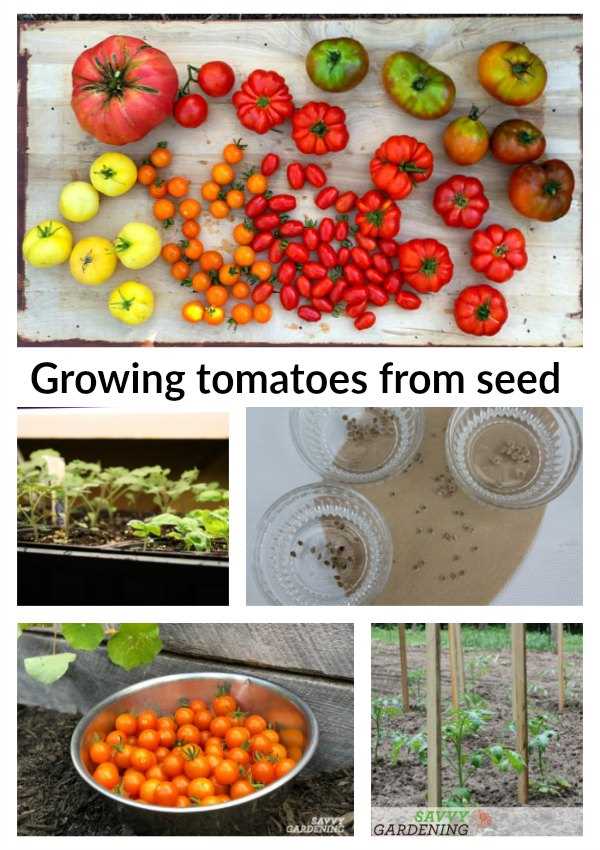
Starting seeds indoors can be a great way to get a head start on your garden and ensure a healthy and robust crop. Here are some tips and tricks to help you successfully start your seeds indoors.
1. Choose the Right Containers
When starting seeds indoors, it’s important to choose the right containers. Use seed trays or pots with drainage holes to prevent waterlogged soil and avoid the risk of damping off disease. It’s also a good idea to use biodegradable pots that can be planted directly into the ground, reducing transplant shock.
2. Use Good-Quality Soil
Invest in a high-quality seed-starting mix or make your own using a combination of peat moss, vermiculite, and perlite. Avoid using garden soil, as it can contain pests, diseases, and weed seeds.
3. Provide Adequate Light
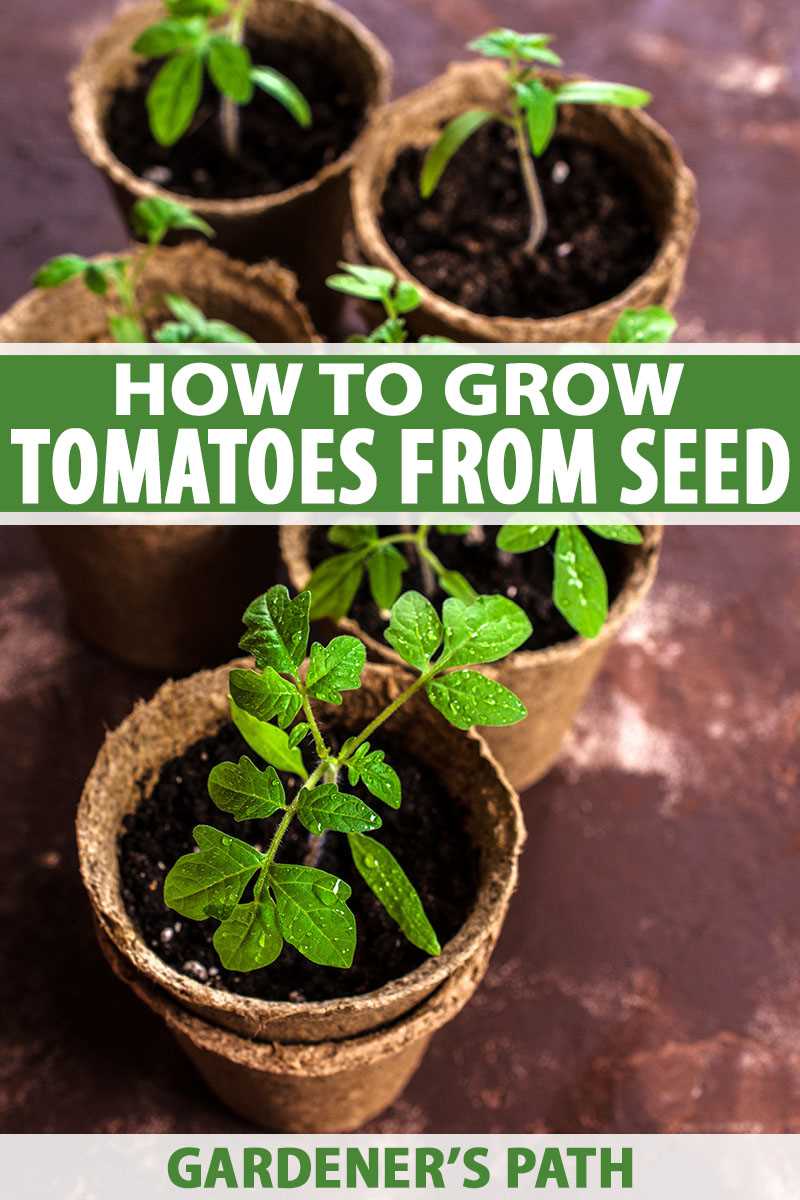
Seedlings need plenty of light to grow strong and healthy. Place your seed trays near a south-facing window or invest in grow lights to provide the necessary amount of light. Keep the lights on for 14-16 hours a day and adjust the height to ensure the seedlings are just a few inches away from the light source.
4. Maintain Proper Temperature
Most seeds require a consistent temperature of around 70-75°F (21-24°C) to germinate. Use a seedling heat mat to provide bottom heat or place your seed trays on a warm surface like the top of a refrigerator. Once the seeds have germinated, reduce the temperature slightly to encourage sturdy growth.
5. Water Wisely
Proper watering is essential for successful seed germination. Use a spray bottle or a watering can with a fine nozzle to moisten the soil evenly. Avoid overwatering, as it can lead to damping off disease. Keep the soil consistently moist but not soggy.
6. Provide Air Circulation
Air circulation is crucial for preventing diseases and strengthening seedlings. Use a small fan to gently move the air around your seed trays. This will help prevent fungal growth and encourage strong stems.
7. Harden Off the Seedlings
About a week before transplanting your seedlings outdoors, start hardening them off by gradually exposing them to outdoor conditions. Place them outside in a sheltered area for a few hours each day, gradually increasing the time and exposure to direct sunlight. This will help the seedlings acclimate to the outdoor environment.
8. Keep a Record
Keep a record of your seed-starting process, including the dates of sowing, varieties planted, and any observations you make along the way. This will help you learn from each season and improve your seed-starting techniques for the future.
By following these tips and tricks, you can ensure successful seed starting and enjoy a bountiful harvest from your indoor-grown plants.
Preparing the Soil for Tomato Seedlings
Properly preparing the soil for tomato seedlings is essential for their early growth and development. Follow these steps to ensure the best environment for your plants:
- Choose a sunny location: Tomatoes thrive in full sun, so select a spot with at least 6-8 hours of direct sunlight each day.
- Clear the area: Remove any weeds, rocks, or debris from the planting area. This will help prevent competition for nutrients and ensure a clean planting surface.
- Amend the soil: Tomato plants prefer well-drained, nutrient-rich soil. Amend the soil by incorporating organic matter, such as compost or well-rotted manure, to improve its fertility and structure.
- Test the soil pH: Tomatoes thrive in slightly acidic soil with a pH range of 6.0-6.8. Use a soil testing kit to determine the pH of your soil. If necessary, adjust the pH by adding lime to raise it or sulfur to lower it.
- Provide adequate drainage: Tomato plants do not like wet feet. Ensure proper drainage by amending heavy clay soils with organic matter and creating gentle slopes or raised beds if needed.
- Apply fertilizer: Before planting, apply a balanced fertilizer according to the package instructions. This will provide essential nutrients to support the growth of your tomato seedlings.
- Work the soil: Use a garden fork or tiller to loosen the soil to a depth of at least 8-10 inches. This will create a loose, crumbly texture that allows roots to penetrate easily and water to drain freely.
- Remove large clumps: Break up large clumps of soil and remove any rocks or roots that may hinder root growth.
- Level the soil: Smooth the soil surface with a rake to make it level and ensure even water distribution.
By following these soil preparation steps, you will provide your tomato seedlings with a healthy and fertile environment for their early growth, setting them up for a successful growing season.
Transplanting Tomato Seedlings Outdoors
Transplanting tomato seedlings outdoors is an important step in the gardening process. It involves moving the young plants from their indoor environment to the outdoor garden beds where they will grow and produce fruit. Here are some tips to help you successfully transplant your tomato seedlings:
Timing:
Before transplanting, it’s important to consider the timing. Tomato seedlings should be transplanted outdoors after the danger of frost has passed and the soil temperature has warmed up. Generally, this is when the nighttime temperatures consistently stay above 50°F (10°C).
Prepare the soil:
Prior to transplanting, it’s crucial to prepare the soil in the outdoor garden beds. Tomato plants thrive in well-draining soil that is rich in organic matter. Amend the soil with compost or well-rotted manure to improve its fertility and structure. Remove any weeds or debris from the planting area.
Hardening off:
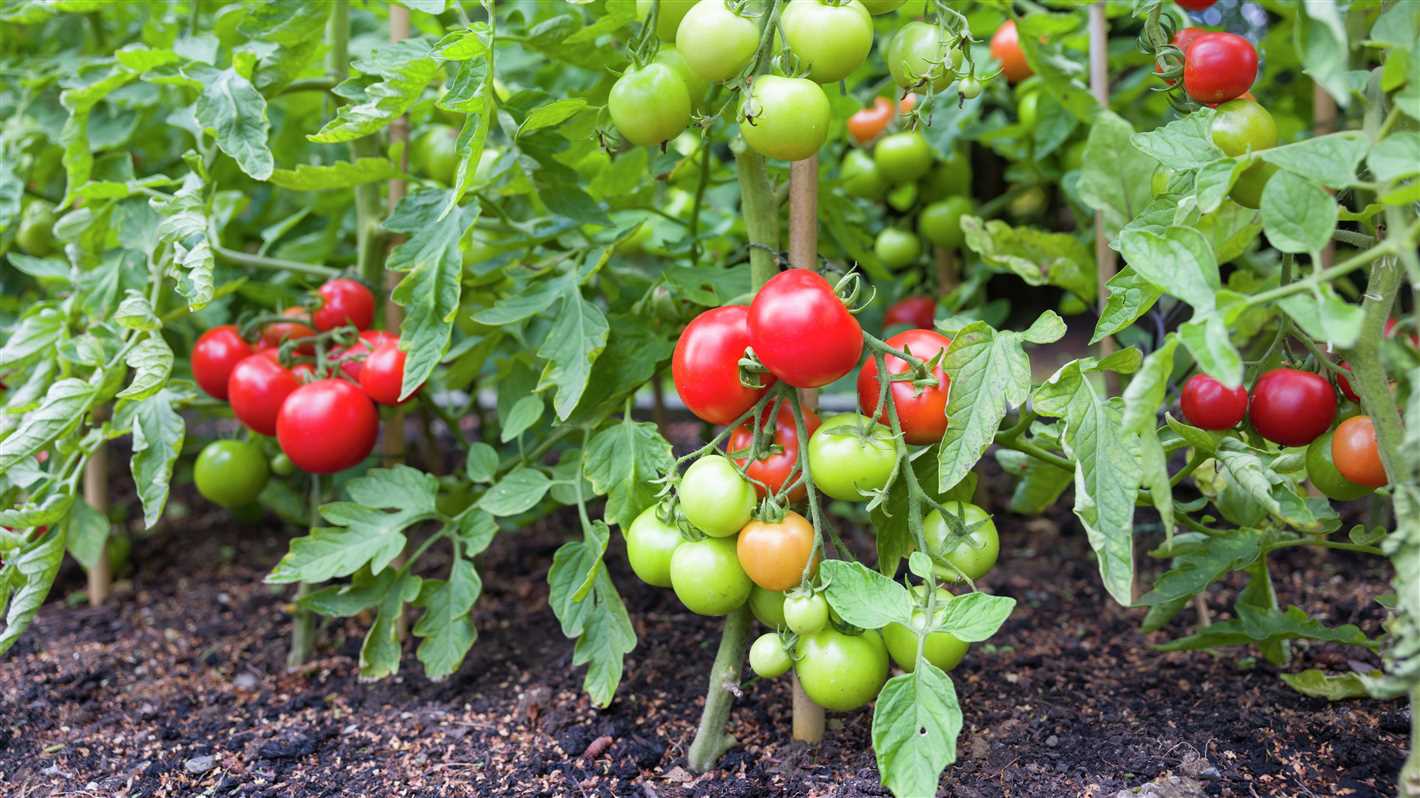
Before transplanting, it’s important to harden off the tomato seedlings. This process involves gradually acclimating the plants to the outdoor conditions by exposing them to sunlight, wind, and outdoor temperatures. Start by placing the seedlings outdoors for a few hours each day, gradually increasing the duration over the course of a week or two.
Transplanting technique:
When transplanting the seedlings, dig a hole in the prepared soil that is deep enough to bury the stem up to the first set of true leaves. This encourages the development of a strong root system. Gently remove the seedlings from their containers, being careful not to damage the roots, and place them in the holes. Backfill the hole with soil and gently press it around the stem to secure the seedling in place.
Spacing:
Space the tomato seedlings properly to allow for optimal growth. Give each plant enough room to spread out and develop a strong root system. Generally, tomato plants should be spaced about 24-36 inches (61-91 cm) apart in rows that are 36-48 inches (91-122 cm) apart.
Watering:
After transplanting, water the seedlings thoroughly to help them establish in their new environment. Keep the soil consistently moist, but not waterlogged, throughout the growing season. Water at the base of the plants to avoid wetting the foliage, as this can encourage disease.
Protecting from pests:
Tomato seedlings are often vulnerable to pests such as slugs, snails, and cutworms. Protect the young plants by using organic pest control methods, such as placing copper tape around the base of the plants or using biological controls like nematodes or predatory insects.
By following these tips, you can ensure a successful transplanting process for your tomato seedlings, setting them up for a bountiful harvest later in the season.
Protecting Early Tomato Plants from Cold Weather
The Importance of Protecting Early Tomato Plants
Tomato plants are sensitive to cold temperatures, especially when they are young and just starting to grow. Exposure to frost or chilly weather can stunt their growth, damage their leaves, and even kill the plants. Therefore, it is crucial to take measures to protect early tomato plants from cold weather.
Choose the Right Tomato Varieties
When selecting tomato varieties for early sowing, choose those that are specifically bred for colder climates or have early maturity. These varieties are more likely to withstand colder temperatures and reach maturity before the coldest part of the year.
Start Seeds Indoors
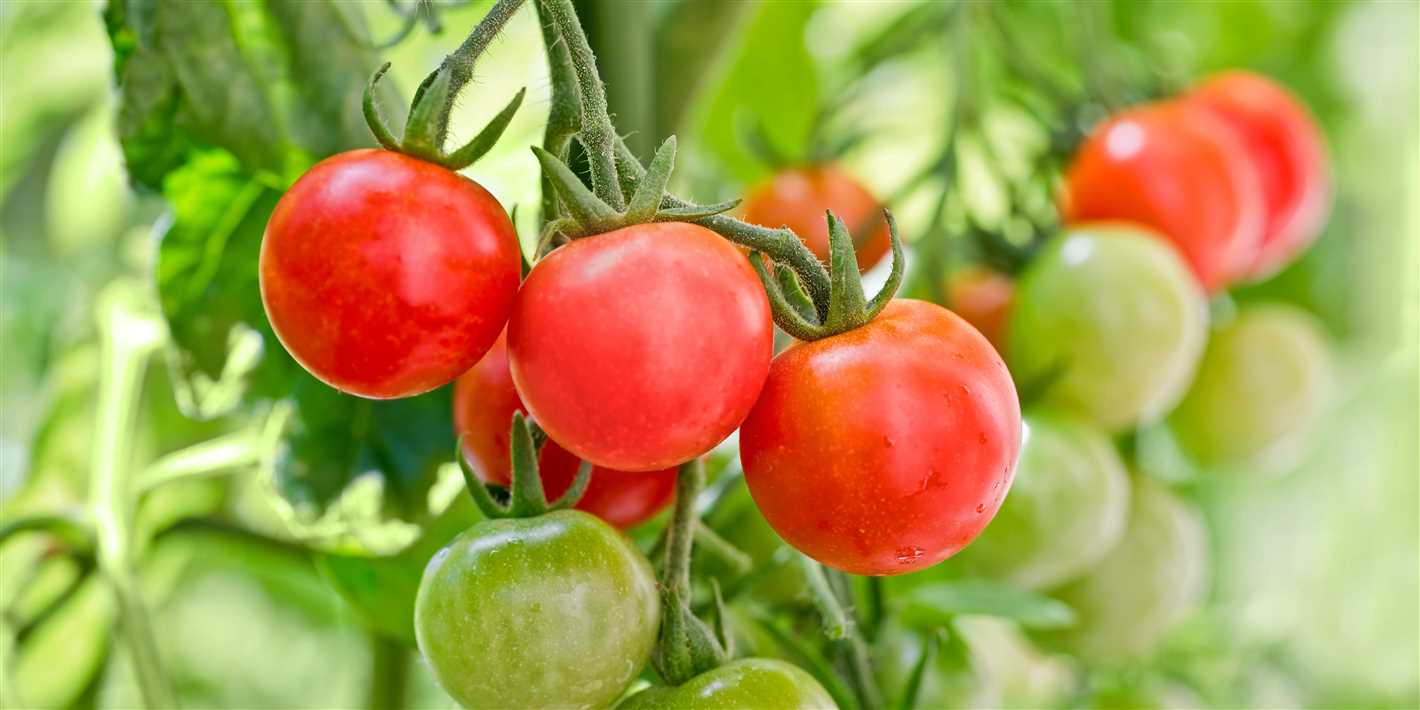
To give your tomato plants a head start, start the seeds indoors. Sow them in seed trays or pots about 6-8 weeks before the last expected frost date in your area. This way, you can control the temperature and provide ideal growing conditions for the seedlings until they are ready to be transplanted outside.
Harden Off Seedlings
Before transplanting your seedlings into the garden, gradually expose them to outdoor conditions in a process called hardening off. This allows the plants to acclimate to cooler temperatures, wind, and sunlight. Start by placing them outside for a few hours each day, gradually increasing the exposure over a week or two.
Use Protective Covers
When planting your tomato seedlings in the garden, consider using protective covers to shield them from potential cold snaps. Options include cloches, row covers, or individual plant covers. These covers create a microclimate around the plants, retaining warmth and protecting them from frost.
Mulch the Soil
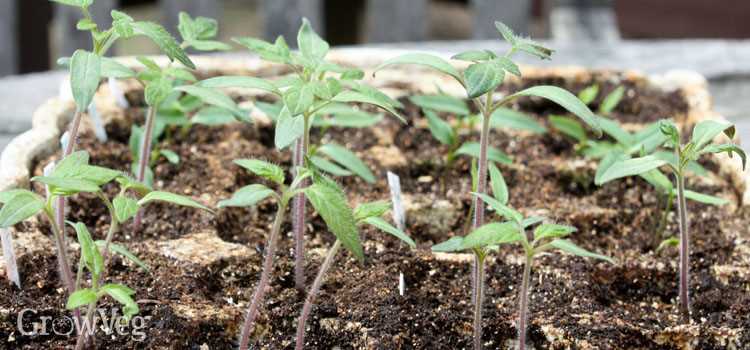
Mulching the soil around your tomato plants helps regulate soil temperature and retain moisture. Apply a layer of organic mulch, such as straw or wood chips, around the plants once they are well-established. This will help to keep the soil warmer during cooler nights and protect the roots from frost.
Monitor the Weather
Paying attention to weather forecasts is essential for protecting your early tomato plants. Keep an eye out for potential frost warnings or chilly nights. If a cold front is expected, take extra precautions by covering the plants with additional protective layers or bringing them indoors if possible.
Summary
- Choose tomato varieties bred for colder climates or early maturity.
- Start seeds indoors to give plants a head start.
- Harden off seedlings before transplanting.
- Use protective covers like cloches or row covers.
- Mulch the soil around plants to regulate temperature.
- Monitor the weather and take extra precautions when necessary.
Watering and Fertilizing Early Tomato Plants
Proper watering and fertilizing are essential for the healthy growth of early tomato plants. Here are some tips to help you provide your seedlings with the right amount of water and nutrients:
Watering
- Water the tomato plants consistently, keeping the soil evenly moist but not waterlogged.
- Avoid over-watering, as this can lead to root rot and other diseases.
- Water the plants at the base, avoiding wetting the leaves to prevent fungal diseases.
- Consider using a drip irrigation system or a soaker hose to deliver water directly to the roots.
- Water the plants early in the morning or late in the evening to minimize evaporation.
Fertilizing
- Choose a balanced fertilizer with equal amounts of nitrogen, phosphorus, and potassium.
- Apply the fertilizer according to package instructions, taking care not to over-fertilize.
- Consider using organic fertilizers, such as compost or well-rotted manure.
- Apply a slow-release fertilizer at the time of planting for a continuous nutrient supply.
- Monitor the plants for signs of nutrient deficiency, such as yellowing leaves, and adjust the fertilizer accordingly.
By providing your early tomato plants with proper watering and fertilizing, you can ensure strong and healthy growth, leading to an early and abundant harvest.
Disease and Pest Prevention for Early Tomatoes
When growing early tomatoes from seedlings, it’s important to take steps to prevent diseases and pests that can harm your plants. By following these preventative measures, you can increase your chances of having healthy and productive tomato plants.
Disease Prevention
Tomato plants are susceptible to several diseases that can affect their growth and yield. Here are some tips to prevent common tomato diseases:
- Choose disease-resistant varieties: Look for tomato varieties that are bred to be resistant to common diseases such as blight, wilt, and viruses.
- Rotate crops: Avoid planting tomatoes in the same spot year after year. Rotate your tomato plants with other unrelated crops to reduce the risk of soil-borne diseases.
- Practice good sanitation: Remove and dispose of any infected plant material or fallen leaves. Disinfect gardening tools between uses to prevent disease spread.
- Avoid overhead watering: Water the base of the plant to keep the foliage dry. Wet foliage can create a favorable environment for diseases to develop.
- Provide adequate airflow: Proper spacing between plants and staking or caging can increase airflow, reducing the chances of disease development.
Pest Prevention
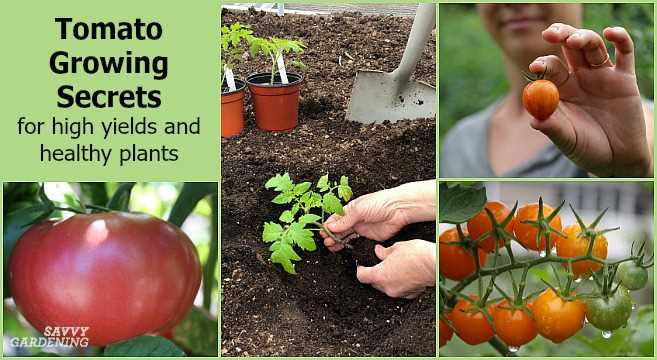
In addition to diseases, pests can also pose a threat to your early tomato plants. Here are some tips to prevent common tomato pests:
- Inspect seedlings: Before planting your seedlings, check them carefully for any signs of pests. Remove any infested plants to prevent pest spread.
- Use physical barriers: Cover your seedlings with row covers or netting to exclude pests like aphids, flea beetles, and caterpillars.
- Practice crop rotation: Avoid planting tomatoes in the same location year after year to reduce the buildup of pest populations.
- Attract beneficial insects: Plant flowers, such as marigolds and daisies, which attract beneficial insects like ladybugs and predatory wasps that help control pest populations.
- Apply organic pest control: Use insecticidal soap, neem oil, or other organic pest control products as needed. Follow the instructions on the label for proper application.
By implementing these disease and pest prevention measures, you can increase the likelihood of a successful early tomato harvest. Regular monitoring and prompt action at the first sign of trouble are also crucial for keeping your plants healthy and productive.
“Question-Answer”
When should I start sowing tomato seeds for an early harvest?
To have an early harvest of tomatoes, it is recommended to start sowing the seeds indoors about 6-8 weeks before the last expected frost date in your area. This will give the seedlings enough time to develop before transplanting them outside.
What is the best method for sowing tomato seeds?
The best method for sowing tomato seeds is to use seed starting trays or pots filled with a well-draining seed starting mix. Sow the seeds about 1/4 inch deep and keep the soil consistently moist until the seeds germinate. Place the trays or pots in a warm location with plenty of sunlight or under grow lights.
Do tomato seedlings need any special care before transplanting them outside?
Yes, tomato seedlings need special care before transplanting them outside. It is recommended to harden off the seedlings by gradually exposing them to outdoor conditions, such as temperature fluctuations and direct sunlight. This should be done over a period of 7-10 days before transplanting to reduce transplant shock.
How often should I water tomato seedlings?
Water tomato seedlings regularly to keep the soil consistently moist but not waterlogged. It is important to maintain a balance, as overwatering can lead to root rot and underwatering can cause wilting and stunted growth. Check the soil moisture regularly and water as needed, making sure not to let the seedlings dry out.
Can I use any type of soil for sowing tomato seeds?
No, not all types of soil are suitable for sowing tomato seeds. It is recommended to use a well-draining seed starting mix, which provides a loose and airy texture to promote healthy root growth. Avoid using heavy garden soil or potting mix that may become compacted and hinder seedling development.







